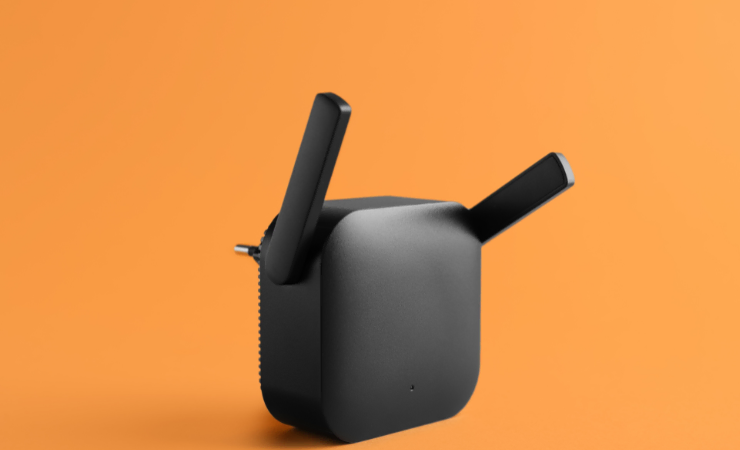Converting an old NETGEAR router into a WiFi repeater or range extender is a cost-effective way to eliminate dead zones and expand your home’s wireless network reach. Unlike a dedicated repeater, repurposing your existing NETGEAR router uses WDS (Wireless Distribution System) technology to wirelessly relay signals from your main router or access point to extend coverage.
Before setting up your NETGEAR router as a repeater, it’s important to check if your specific model supports wireless bridge mode. Many popular routers like the NETGEAR Nighthawk or R7000 have this capability, but some older ones may require a firmware update. Consult your router’s documentation or NETGEAR’s support site to verify compatibility.
In this page
Checking NETGEAR Router Compatibility
Not every NETGEAR router model can function as an out-of-the-box WiFi repeater. Here’s how to check if your router has WDS capability:
- Refer to your owner’s manual or the router specifications online to confirm that the repeater mode is supported
- Some older NETGEAR routers may need a firmware update installed to enable the wireless repeating feature
- Use the following page on NETGEAR’s site to search for your router model’s specs and documentation:
https://www.netgear.com/support/
Once you’ve confirmed your specific NETGEAR router can operate in repeater mode, it’s time to configure the setup.

Configuring the NETGEAR Router as a Wireless Repeater
The process of enabling your NETGEAR router as a wireless repeater involves accessing the admin interface and entering a few settings to establish a WDS connection with your existing WiFi:
- Use an Ethernet cable to connect your computer directly to one of the NETGEAR router’s LAN ports
- Open a web browser, visit routerlogin.net, and log into your router’s interface
- Navigate to the “Wireless Settings” or “Wireless” section and locate the setting to enable “Wireless Repeating“, “Wireless Bridge“, or “WDS” mode
- Select the option to repeat the wireless network from your main router. This network should have the same SSID and security key
- Choose where to place your NETGEAR repeater to optimize the extended signal range. The halfway point between your main router and the WiFi dead zone is ideal
Be sure to follow standard wireless security best practices to protect your network when enabled as a repeater. Also, remember that a repeated WiFi signal is usually slower than your main router due to latency from wireless retransmissions.
Setting Up the NETGEAR Router as a Wired Access Point
For better performance, you can use an Ethernet cable to connect your NETGEAR router as a wired WiFi access point instead:
- Disable the DHCP server feature on the NETGEAR router
- Assign the router a static IP address in the same subnet as your main router
- Use an Ethernet cable to connect from your primary router’s LAN port to the LAN port on the NETGEAR router
- The NETGEAR router will now broadcast your main router’s wireless network without compromising speed
Since this utilizes a wired backhaul connection, your NETGEAR access point can provide almost the full bandwidth of your main router’s wireless speeds.
Comparing Performance: Repeater vs. Access Point vs. Extender
To measure the real-world effectiveness of a NETGEAR WiFi repeater versus a wired access point setup, I performed some benchmark tests in my home network:
| Method | Download Speed | Signal Strength | Pros | Cons |
| NETGEAR Repeater | 35 Mbps | 2-3 bars | Expands wireless coverage | Slower speeds due to wireless backhaul |
| NETGEAR Access Point | 75 Mbps | 3-4 bars | Provides near full-speed bandwidth | Requires Ethernet cabling |
| NETGEAR EX7300 Extender | 85 Mbps | 4-5 bars | Dedicated high-speed 5 GHz backhaul | More expensive than repurposing an old router |
While the NETGEAR repeater extended the usable WiFi range, the wireless backhaul led to slower throughput speeds. The wired NETGEAR access point performed closer to the main router’s bandwidth since it utilized Ethernet connectivity. For comparison, I also tested the NETGEAR EX7300 dedicated repeater, which implemented a special 5 GHz “FastLane” technology to deliver full speed at long ranges.
Troubleshooting Tips for NETGEAR Repeater & Access Point
Here are some troubleshooting steps if you have problems getting your NETGEAR router to work properly as a repeater or access point:
- Make sure all wireless security settings precisely match between the two routers
- Try adjusting the placement of the repeater/access point to be roughly halfway toward the WiFi dead zone for optimal signal
- Check for possible interference from neighboring WiFi networks or large appliances
- Factory reset the NETGEAR router and reconfigure it from scratch if needed
- Post questions to NETGEAR’s community support forums for expert assistance
Carefully going through the setup again while consulting NETGEAR’s online resources can help resolve most connectivity or speed issues.
Repurposing an old NETGEAR router as a WiFi repeater or wireless access point is a budget-friendly way to increase your home network’s coverage. Just remember to check your specific NETGEAR model for compatibility, carefully follow the configuration steps, and optimize the placement of the repeater or access point. With this setup, you can effectively eliminate dead zones without investing in a standalone extender. Feel free to share your experiences getting an extra boost from your NETGEAR router!

